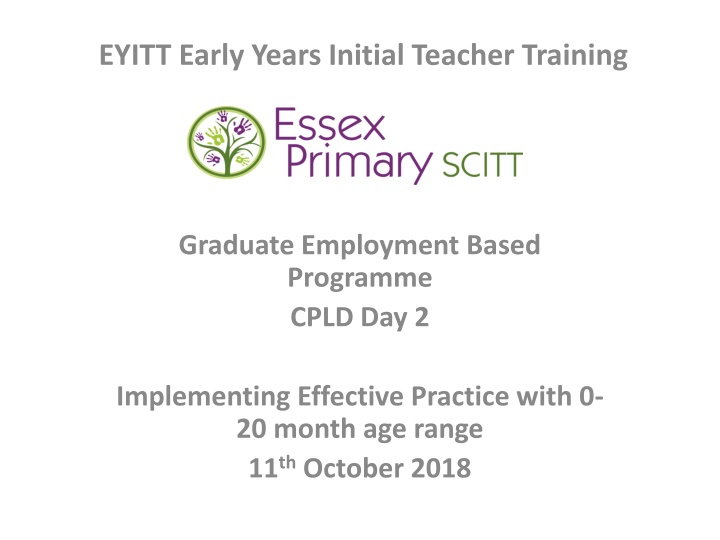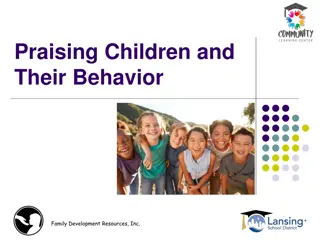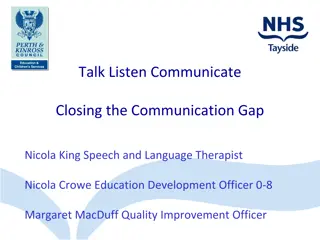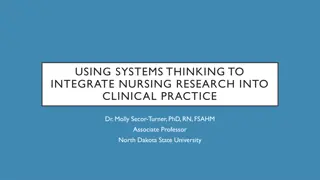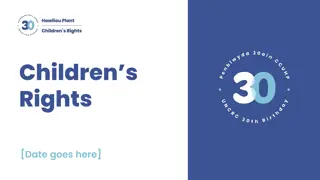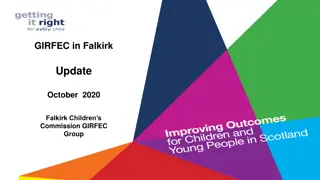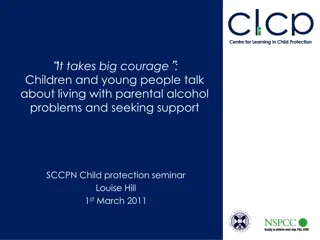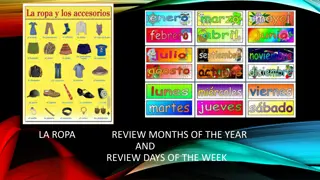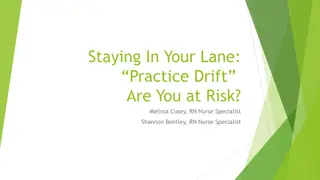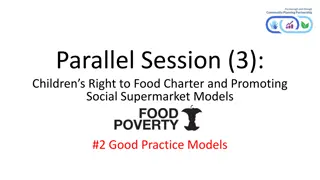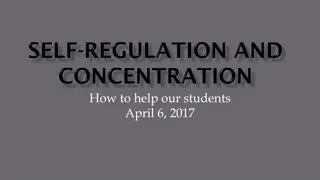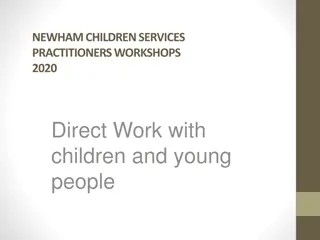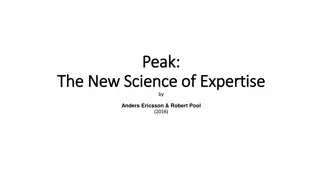Implementing Effective Practice: Children Development 0-20 Months
"Explore children's development in the 0-20 month age range with a focus on prime areas of learning, emotional well-being, schemas, early literacy, and early math. Evaluate supplementary materials for this age phase. Activities include sharing effective practices and supporting schemas. Understand how schemas are patterns of repeated behaviors in children's play that aid in learning and development. Discover the importance of sensorimotor experiences and symbolic representation in early childhood learning. Practical insights for early years initial teacher training and graduate employment programs."
Download Presentation

Please find below an Image/Link to download the presentation.
The content on the website is provided AS IS for your information and personal use only. It may not be sold, licensed, or shared on other websites without obtaining consent from the author.If you encounter any issues during the download, it is possible that the publisher has removed the file from their server.
You are allowed to download the files provided on this website for personal or commercial use, subject to the condition that they are used lawfully. All files are the property of their respective owners.
The content on the website is provided AS IS for your information and personal use only. It may not be sold, licensed, or shared on other websites without obtaining consent from the author.
E N D
Presentation Transcript
EYITT Early Years Initial Teacher Training Graduate Employment Based Programme CPLD Day 2 Implementing Effective Practice with 0- 20 month age range 11thOctober 2018
Aims of this session To explore the development of children within the 0-20 month age range with an emphasis on supporting the prime areas of learning and development sharing effective practice To explore ways of supporting emotional well being and development with this age phase To explore and develop understanding of Schemas and the role these play in development and learning To understand what early literacy means and what this looks like in practice To explore the meaning of early maths and what this looks like in practice To evaluate supplementary SSTEW materials for 0-2 age phase
Covered in this session Sharing of effective practice with 0-2 years age phase ACTIVITY ! Improving understanding of schemas and how we can support this effectively Emotional and mental health and well being - expert practitioner (Gemma) Early literacy A project implementing early literacy in the baby room (with permission) Early Maths what does this look like for babies and young toddlers Supplementary materials for 0-2 age range
Activity sharing learning Each person has 5 minutes to present / explain their planned activity with 0-2 year olds Peer questions Peer discussion and reflection age/ stage appropriate? EBI? Which Prime area is supported?
Schemas Schemas are patterns of repeated behaviours that may be observed in young children s play as they explore and make sense of the world around them. Using their senses and movements, children may show their fascination for moving things here and there, hiding things in small enclosed places, covering themselves and objects, throwing things and watching them fall, and so on. Schemas are an intrinsic part of child development. They are important to our understanding of how some children learn. Knowing about schemas offers a positive view of children s actions and enables parents and practitioners to make sense of what children are doing. Schemas operate at different levels in child development. For children under three years of age, learning develops through sensorimotor experiences (absorbing information through what they see, taste, touch, hear and smell and through their own movements) and symbolic representation (when they make something stand for something else). Early schemas provide the basis for later learning and development of abstract thought . *Oxfordshire County Council
Knowledge of schemas and understanding schematic behaviour in young children can help practitioners to: understand why children are doing certain things describe children s actions and behaviours in new ways support parents understanding of their children s learning inform planning for children s individual interests, preoccupations and abilities be more effective in supporting children s learning through thought extension and modelling of language, and the provision of enjoyable experiences provide real and first-hand experiences for exploration and experimentation enable repetition of opportunities
Activity - schemas Choose a schema in pairs and identify: What it means Examples of what a child may do What the adults could do to extend
Schemas and the under 3s Schema What it means Examples of what a child may do What adults could do to extend Provide wheelbarrows to move sand; give items that can be moved and provide bags, baskets, containers, trolleys and pushchairs; take on picnics, go on trips or watch trains and buses transporting people, play travelling games with lined up chairs or boxes for going on a bus/train; sing Down at the station or The wheels on the bus ; read Whatever next , etc. Carries items to a special person; moves objects in wheeled toys; puts things in bags and moves them from place to place; carries sand in bucket and takes playdough to the home corner; pushes friends around in a toy pushchair Moving resources and self from place to place Transporting Model and provide resources for wrapping presents, practicing wrapping things around with ribbons or tape or putting letters into envelopes; provide playdough to wrap around/hide toys in; sing Wind the bobbin up demonstrating actions with materials; have dressing up clothes, hats and scarves available for putting layers on; have shredded paper; play pass the parcel, hide and seek and peek-a-boo games ; make houses with roofs; model words such as hiding or disappear , etc. Hides under blankets, bath robes, scarves, material, in boxes or dens; loves wearing hats; may cover their face with flannel when washing; wraps things up, paints over pictures; sits in a sand tray and covers their legs with sand; folds a picture and then wraps in more layers of paper Covering themselves or other items Enveloping Provide balls of different sizes; build slopes and ramps to roll things down; provide target throwing opportunities; provide a variety of building bricks and other resources to build towers and knock them down; have available percussion instruments; provide opportunities to experience space and movement in/out, to move under, climb up, move across; play with ribbons waving them up/down or side to side; at mealtimes provide suitable things to drop down rather than food; begin to introduce language of over/under , fast/slow, high/low; provide leaves or feathers to watch them falling down, etc. Drops things form high chair or cot; throws things; may gaze at your face; lines things up; climbs up and over; jumps off furniture; runs up and down; draws or paints lines; follows lines painted on the floor/ground; plays with running water in the bathroom; likes to go through tunnels; makes trails with glue; pushes cars or pushchairs in a straight line; knocks over structures built by other children; likes to wear clothes with stripes Learning about movement of things and self in vertical, horizontal and diagonal lines, still and in motion Trajectory (straight lines)
Schemas and the under 3s Provide hoops and tyres to roll around, play parachute and circle games; provide toys which have moving parts to turn around, provide spinning tops, clocks, kaleidoscope and water wheels; roll with rolling pins; make windmills; use stickers for decoration; talk about shapes and spy the around; compare circles; sing Round and round the garden with finger actions or Wind the bobbin up with bobbin, etc. Interested in wheels and cogs; likes twirling and twisting themselves, enjoys spinning round or being swung around; runs in circles; rolls down a hill, turns taps on and off, draws circles, likes to watch fans, washing machines and whisks in movement, reaches for round objects near them; likes to watch rolling balls Exploring things that turn, including self Rotating (circles) Provide a variety of construction toys, trains and train track; provide pegs, string and tape to connect things together; provide ribbons to weave in and out of resources; provide magnetic toys, pipes, tubes and guttering, locks and chains for exploration and to practice connecting, etc. Gives and collects objects from adult; enjoys construction toys which involve joining things together; takes things apart, joins the table and chair by sticking tape across; ties a string to crates or bikes Connecting Joining and separating Plays with farm animals and makes fences for them; builds enclosures with bricks and puts objects inside; puts cars in a garage, may draw a line around their picture; likes to sit inside a space such as basket or tyre; may surround themselves with cushions Provide peg boards to make borders or duplo boards for building houses: provide resources to make borders on paper and 3-d; barrels and tunnels are good for hiding in as are den building materials and pieces of fabric, etc. Surrounding self, objects or space with a border Enclosing Posts things behind radiators or in bins; likes to put objects inside boxes, bags and pots, likes to climb into boxes and hide in the cupboards; plays in tents; loves to fill up buckets with sand; may put their thumb in and out of their mouth Play hide and seek games; provide opportunities for burying and digging objects out; provide shape sorting toys, provide a variety of containers, such as boxes and tins to put collections of items in, etc. Putting self or things inside other objects Containing
Schemas and the under 3s Lies on the floor or under a table; may put things on their head; walks around the edge of a sandpit; prefers to have food items separated on a plate; enjoys lining up cars and threading beads/buttons; likes to stand at the front or back of a line Provide tyres, crates and boxes in different places and at different heights for children to position themselves or objects in; provide sweet and biscuit tins or wooden boxes and pegs for positioning around, make caterpillars or trains, etc. Placing objects or themselves in particular places Positioning Look for patterns that contain dots and dabs; provide opportunities to spot with paint or dab pens; look at ladybirds, flower heads, eyes, etc. Interested in making marks such as spots or eyes Dabbing Random or specific marks Likes to see, manipulate and explore changes with dry/wet materials; may add juice to their mashed potato; likes to mix sand and water Provide a variety of malleable materials; let children mix paints, add colour to cornflour or water to clay; engage children in cooking activities; explain changes, etc. Transforming Exploring changes
Heuristic Play Heuristic play describes the activity of babies and children as they play with and explore the properties of objects . These objects are things from the real world. Elinor Goldschmeid
EYFS Prime Area Personal Social and Emotional Development Personal Social and Emotional Development Self confidence and self awareness Managing feelings and behaviour Making relationships Expert Practitioner Gemma emotional and mental health and well being
SSTEW for under 2s Share work to date Review Discuss EBI?
EYFS Unique child- every child who is constantly learning and can be resilient , capable , confident and self assured
Prime area - Communication and Language Evidence - Save the children and Lighting up young children s brains Read on, get on campaign; talkingpoint.org.uk Speech and language stats I CAN Importance of early literacy and how this links to language development if a child does not have the basic skills of speech language and communication they are likely to be disadvantaged for life
Early communication early literacy Early language and early literacy develop hand in hand To become good readers children 1st need to become confident and competent communicators with clear speech, increasing vocabulary and comprehensions ( Save the Children) Importance of vocabulary in influencing progress in early literacy evidence from Fisher 2016
Speech and language milestones *talkingpoint.org 0-6 months Turn towards a sound when they hear it Be startled by loud noises Watch your face when you talk to them Recognise your voice Smile and laugh when other people smile and laugh Make sounds to themselves, like cooing, gurgling and babbling Make noises, like coos or squeals, to get your attention Have different cries for different needs. For example one cry for hunger, another when they are tired 6-12 months Listen carefully, and turn to someone talking on the other side of the room Look at you when you speak and when their name is called Babble strings of sounds, like no-no and go-go Make noises, point and look at you to get your attention Smile at people who are smiling at them Start to understand words like bye-bye and up especially when a gesture is used at the same time Recognise the names of familiar objects, things like car and daddy Enjoy action songs and rhymes and get excited when sung to Take turns in conversations, babbling to an adult
Speech and language milestones *talkingpoint.org 12-18 months Enjoy games like peek-a-boo and pat-a-cake and toys that make a noise Start to understand a few simple words, like drink , shoe and car . Also, simple instructions like kiss mummy , kick ball and give me Point to things when asked, like familiar people and objects such as book and car Use up to 20 simple words, such as cup daddy and dog . These words may not always be easily recognised by unfamiliar adults Gesture or point, often with words or sounds to show what they want Copy lots of things that adults say and gestures they make Start to enjoy simple pretend play, for example pretending to talk on the phone 18-24 months Concentrate on activities for longer, like playing with a particular toy Sit and listen to simple stories with pictures Understand between 200 and 500 words Understand more simple questions and instructions. For example where is your shoe? and show me your nose Copy sounds and words a lot Use 50 or more single words. These will also become more recognisable to others Start to put short sentences together with 2-3 words, such as more juice or bye nanny Enjoy pretend play with their toys, such as feeding dolly Use a limited number of sounds in their words often these are p, b, t, d, m and w. Children will also miss the ends off words at this stage. They can usually be understood about half of the time
Standard 3.4 Demonstrate a clear understanding of systematic synthetic phonics in the teaching of early reading Amplification: Create a literary rich environment and plan phonological opportunities for learning and development. Early Years teachers understand phonics in their earliest form ....
Trainee Project - the what A study of early Literacy within the baby room and what I have implemented From the day our children are born (yes) until the day they tell us to stop, we should read to them (Michael Rosen). If we are serious about making a difference to children s lives, we have to provide a language and literacy rich environment ( Tassoni).
The why. Through observation and discussion A identified that the children in the baby room were not accessing the good books as they were high up and out of reach A reflected and questioned Why was this? what does a literary rich environment look like for babies? How can I improve this situation?
The How.. Through discussion , sharing research and ideas with colleagues Literacy in early years includes: books, print in the environment, singing, rhymes, early mark making, looking at and talking about pictures in stories, playing games with puppets, using silly voices, listening activities , inside and outside all of these can spark, communication , literacy and learning.
Positive Literacy spaces A used existing cosy corner made it more inviting added cushions, books within reach, used space for singing activities, musical activities to promote phonological awareness Used knowledge of likes and interests of the children to create illustrations for the ceiling of this area Tiny Turtle, Ducks, Black sheep to promote interaction!
Impact Very quickly babies noticed the illustrations One pointed to the turtle so we sang the song Tiny Tim, another pointed to duck and said quack another found the book First 100 Words and found and pointed to a picture of a duck!
Further research .. Impact of simple changes led to further research on early reading Newborns prefer to look at black, white and geometric shapes due to the structure of the retina not yet mature enough to perceive values and intensities in colour ( up to 6 9 months) Black and white and monochrome illustrations support gaze, fixating, tracking and scanning all needed for early reading
Ongoing Working with parents Reading caf Library visits Book lending system from setting Outdoor environmental changes book area / print / logos Books in home corner / construction area
Reflection How could you adapt your environment to ensure it is literary rich for babies? Consider the following? How does early literacy support physical development?
ACTIVITY Each table has a variety of resources Explore, talk and get creative! What can you do to support mathematical development with babies using these resources?
Standard 3.5 Demonstrate a clear understanding of appropriate strategies in the teaching of early maths Amplification: Use appropriate strategies to create a mathematically rich environment successfully identifying and planning developmentally appropriate opportunities and experiences for babies , toddlers and young children. Early Years Teachers embed early mathematics into continuous provision and promote problem solving for babies toddlers and young children ..
What is mathematics? Question shout out activity what is maths? Activity: 4 is the magic number In small groups make a list of all the things that have a fourness about them Examples: 4 leaved clovers are really lucky 4 seasons in the year 4 Horsemen of the Apocalypse . How many examples can you find?
Mathematics is A tool that enables us to solve problems About the real world A means of communicating information and ideas Exciting, fun and creative Exploring and critical thinking
EYFS 2017 Mathematics involves providing children with opportunities to develop and improve their skills in counting , understanding and using numbers, calculating simple addition and subtraction problems and to describe shapes, spaces and measure
Research National strategies - Children Thinking Mathematically The EYFSP score reveal that boys do less well than girls especially in the area of of calculation All children can be successful provided they have opportunities to explore mathematical ideas in ways that make sense to them Maths does not need to reside in a maths zone !
Getting practical The treasure basket How many opportunities for maths can you identify?
Routines Daily routines , snack , brushing teeth, getting dressed, all provide a wealth of mathematical opportunities what other opportunities can you think of?
Practical ideas- shape space and measure Model language Go for a walk, look up , look down , hold baby high up , low down so that can see the world around them from lots of different angles/ positions Narrate babies actions you are going down the slide, you are climbing up the steps, you are very high Sand and water play, filling, emptying, different sized containers Posting games, hide toys Open ended resources, boxes, tubes , Tunnels, dens, climbing opportunities, dance Putting toys in different places to encourage positional language Regular opportunities to engage in cookery Weight washing line Room on the Broom measuring Snack time
Numbers Babies as young as five months appear to be aware of quantities, and they can notice changes in amounts of objects. Providing babies with objects to explore supports this early development of number. As young as eight months old, children are developing an awareness of number names, and include these in their speech, as soon as they begin to talk. As children listen to the talk around them, they are introduced to number through opportunities that occur in everyday life, and experience a variety of number rhymes. This supports their growing knowledge of number names.
Numbers Make a collection of objects that excites baby in a box e.g. animals, dinosaurs, put them in one at a time and take them out one at a time, talk about how many , lots, altogether. Encourage lining up of objects for accurate counting Build a tower of blocks together, 1 2....3! Number rhymes and songs: Ten in a bed , 5 little monkeys , 1,2,3,4,5 once I caught a fish alive... Stories : 3 Little Pigs , Bill Goats Gruff , Goldilocks and the Three Bears Numbers in the environment Hopscotch and floor number lines
In summary Provide opportunities for daily mathematics within daily routines, stories and songs Audit the environment is it ordered , are resources accessible , do they stimulate interest, are opportunities available for exploration with bodies, do children have ownership over the resources and their function? Think about use of mathematical language at every opportunity Be positive and enthusiastic!
To Finish Resources: Developmental Psychology and Early Childhood Education, David Whitebread, 2012 Sage publications Developing Play for the Under 3 s, Anita Hughes, 2016, David Fulton Publishers Why Love Matters, Sue Gerhardt, 2004, Routledge Understanding Babies and Young Children from Conception to three, Christine Macintyre, 2012, Routledge How Babies Think, Gopnik et al, 1999, Orion Publishing Group The Holistic Care and Development From Birth 0 3, Kathy Brodie, 2018, David Fulton publishers TED TALKS Alsion Gopnik How babies think www.foundationyears.org.uk 1001 days Critical Manifesto The Little Book of Treasure Baskets: Little Books with Big Ideas. Ann Roberts www.zerotothree.org
